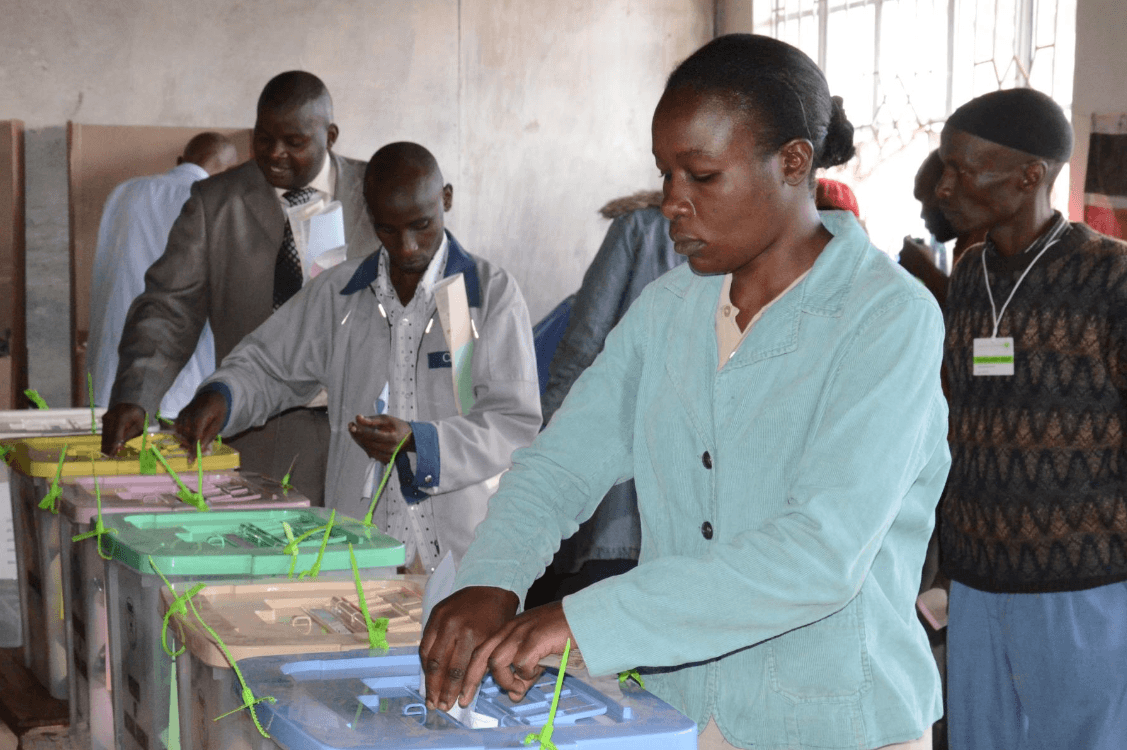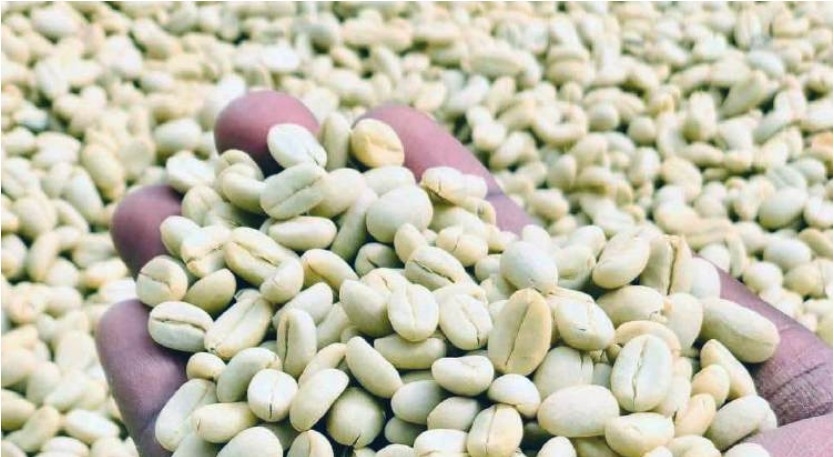Mists and thick darkness surround a lonely Kevin Owuor as he ventures out to inspect his traps.
These are baits to help him collect hundreds, sometimes thousands, of insects.
During the day, he will be fixated on his microscope studying them for drug resistance, parasite infections, and vector biology.
Kevin is part of a growing retinue of young Kenyan researchers with one assignment: to stop the relentless march of disease vectors such as mosquitoes, often described as the most murderous animal on earth.
Although he spends most of his time inside laboratories at the Kenya Medical Research Institute in Kisumu, Kevin says he’s working to protect you.
“They are coming for you,” he says of mosquitoes, noting that as the climate changes they are marching to new areas and developing the ability to shake off or neutralise insecticide when you spray them.
“The environment is becoming favourable to them. It’s becoming warmer and humid. They thrive best where temperatures are above 28 degrees, but not very hot. Climate change is favouring them,” he says.
The same may be true of other insects that spread diseases, such as the sandfly and tsetse fly.
But the reason many scientists are focusing on mosquitoes is that they are arguably the deadliest animal in the world to humans.
They spread diseases such as malaria, yellow fever, dengue, chikungunya, West Nile Virus, and Zika virus, which together kill about one million people every year.
That is more deaths each year than from war and murder combined.
Malaria, which represents more than half of these deaths, is tragically most lethal for children aged under five years.
In Kenya, there are an estimated 3.5 million new clinical cases and 10,700 deaths each year.
The Ministry of Health says malaria accounts for about 19 per cent of outpatient consultations nationally and 60 per cent of outpatient consultations in the eight counties with the highest burden, mostly in western Kenya.
The ministry says due to altitude, rainfall patterns and temperature, about 70 per cent of the Kenyan population is at risk for malaria.
Kevin says there are ominous warning signs that diseases spread by mosquitoes are coming to highland areas that were previously seen as safe.
“For instance, areas like Kisii and Uasin Gishu are already reporting malaria outbreaks. The changing climate will favour some vectors more than others. Especially anopheles Arabiensis because it’s already used to dry areas,” he says.
He says the insect is also developing insecticide resistance. “The cuticle (body covering), is becoming thicker and doesn’t allow penetration of insecticide. They have also developed an enzyme to clear the insecticide, the way liver clear alcohol from the body,” he says.
A parasitologist, Kevin studied microbiology at the University of Nairobi before concentrating on parasites and parasitic diseases for postgraduate studies.
YELLOW FEVER THREAT
Shillah Simiyu, an infectious disease scientist, has also been trapping thousands of mosquitoes.
Based on her studies, she warns that Yellow Fever – a disease lastly reported in Kenya in 1992 – could return because of the abundance of the mosquito varieties that transmits it.
“It (Kenya) is also potentially at risk of Yellow Fever re-emergence given the recent recurrent YF outbreaks in the neighbouring countries of Uganda, South Sudan, and Ethiopia with the possibility of cross-border spillover either through infected non-human primates, humans, or mosquitoes,” she says.
Between February to June 2021, Shillah and her team collected 3,865 mosquitoes belonging to 37 different mosquito species in Nguruman (Kajiado county) and 1,973 in Kerio Valley (Baringo county).
“Yellow Fever vectors accounted for 37.9 per cent of Nguruman’s mosquito collection,” Shilla says.
In Kerio Valley, the types of mosquitoes that spread Yellow Fever – Aedes aegypti, Aedes simpsoni, and Aedes vittatus – were the most abundant with abundances of 42.3 per cent, 16.6 per cent, and 7.6 per cent respectively.
Aedes Africanus, which was implicated in Kenya’s last outbreak in 1992, only accounted for 0.10 per cent of the collection.
Shillah, a young scientist at the International Centre of Insect Physiology and Ecology (ICIPE), says Nguruman and Kerio Valley are at risk of Yellow Fever re-emergence based on their abundance of Yellow Fever vectors.
“Therefore, there is a need to intensify surveillance and vector control strategies in these areas,” she said. She also presented her findings at the recently-ended Kemri annual scientific and health conference in Nairobi.
MALARIA CONTROL
At the Coast, in Kilifi Kemri research scientist Prof Isabella Oyier is leading the fight from a unique front.
Her interest in malaria began after her undergraduate degree in biology.
“I had an opportunity to work as an intern, in a group that was looking at anti-malarial resistance,” she says.
That was 20 years ago. Currently, Prof Oyier, the head of bioscience department at Kemri -Wellcome Trust Programme, is leading a project to integrate malaria molecular surveillance into routine Kenya malaria control.
“Molecular surveillance is the regular or routine monitoring of the genetic makeup [of the malaria parasite]. The variants in the parasite that allow it to either escape malaria treatment or escape detection by a rapid diagnostic test,” she explains.
This provides some early warning signals that there's a variant of concern, after which the government can do tests within a population to determine how widespread it is and what actions to take.
She notes that climate change is playing a role in the spread of mosquito-borne diseases.
“In Kenya, there are certain areas that don't have malaria. When you detect malaria there it is maybe because it's been imported from malaria-endemic region, “ she says.
“But if conditions are conducive for transmission, then you can see how malaria cases would go up in areas where you previously didn't have it,” she said.
She says efforts to eliminate vector-borne diseases such as malaria cannot succeed if countries work in isolation, because of the free movement of people.
“We have to be tracking this movement, tracking borders and doing strong surveillance to control the disease. And so molecular surveillance is one of those tools that I’m proposing, to keep tracking the [plasmodium] parasite,” she explains.
A few other scientists have trained their eyes on tsetse fly and the sandfly, an old, tinier insect, has been extending its foray into Kenya.
EYES ON SANDFLIES
Francan Ouma, a former lecturer of Masinde Muliro University in Kakamega says if you’re in Machakos or in Meru, and are cursing the influx of sandflies, save some vitriol for climate change, which has definitely played a role in exacerbating their spread to these areas.
Francan and his colleague Chrispinus Mulambalah of Moi University’s department of medical microbiology and parasitology, have been following the spread of diseases caused by sandflies from northern Kenya to the rest of the country.
These diseases are mainly visceral leishmaniasis (kala-azar) and cutaneous leishmaniasis (Oriental sore).
As with mosquitoes, it’s only the female sand flies that bite and they use the extra nutrients from blood to produce more eggs.
They become infected by ingesting cells infected with Leishmania during blood meals and spread the parasite when they bite another person.
Although leishmaniasis is curable, it still sickens and kills many Kenyans because of a low index of suspicion by health care providers, late diagnosis and case management.
“If not treated, patients with kala-azar will die,” the Ministry of Health says in its National Strategic Plan for Control of Leishmaniasis (2021-2025).
The current treatment for leishmaniasis is not readily available in most health facilities as the medicines are expensive.
Francan says leishmaniasis is now emerging and reemerging within and outside traditional endemic regions.
“The disease spread has been further enhanced by population growth and movement, environmental and climate changes, and social conflicts,” Francan says.
He adds: “It is evident that without a paradigm shift in control methods, diagnostic techniques, and treatment protocols, the diseases may spread to even more areas in the country.”
The only way to prevent leishmaniasis is to avoid getting bitten by a sandfly, by using insect repellents, bed nets and wearing clothing that covers as much skin as possible.
Due to growing demand, the Kenya meteorological services has also strengthened its partnership with the public health community to control diseases.
Director Stella Aura told the Star Met officers are studying long-term data to understand how the climate is changing around the country.
“You get droughts, areas that are not prone to flooding get more flooding. Recently you heard lakes in the Rift Valley rising. But we are also doing research to confirm this is actually climate change,” she said.
“But just looking at it as a scientist I can say there's climate change, from the experience I have. But there’s a team looking at the data and we’ll soon be able to say there’s climate change and give parameters.”
If you live in places that suddenly become favourable for respiratory diseases, you will be affected.”
However, she noted the changing temperature and rainfall trends are already impacting the seasonality and distribution of infectious diseases.
“If there are insects or pests that favour warm temperatures, for example like mosquitoes, if you have pool of water and you have mosquitoes, the vector will spread,” she said.
“Even as climate changes other things are affected. If it favours locusts they will come. Even illnesses. If you live in places that suddenly become favourable for respiratory diseases, you will be affected.”
The good news about disease-spreading insects is that higher temperatures will make many places inhabitable to them.
The bad news is: places that are currently relatively cold will become habitable, shifting new diseases there. So the fight continues.
This story was supported by Women In News

















